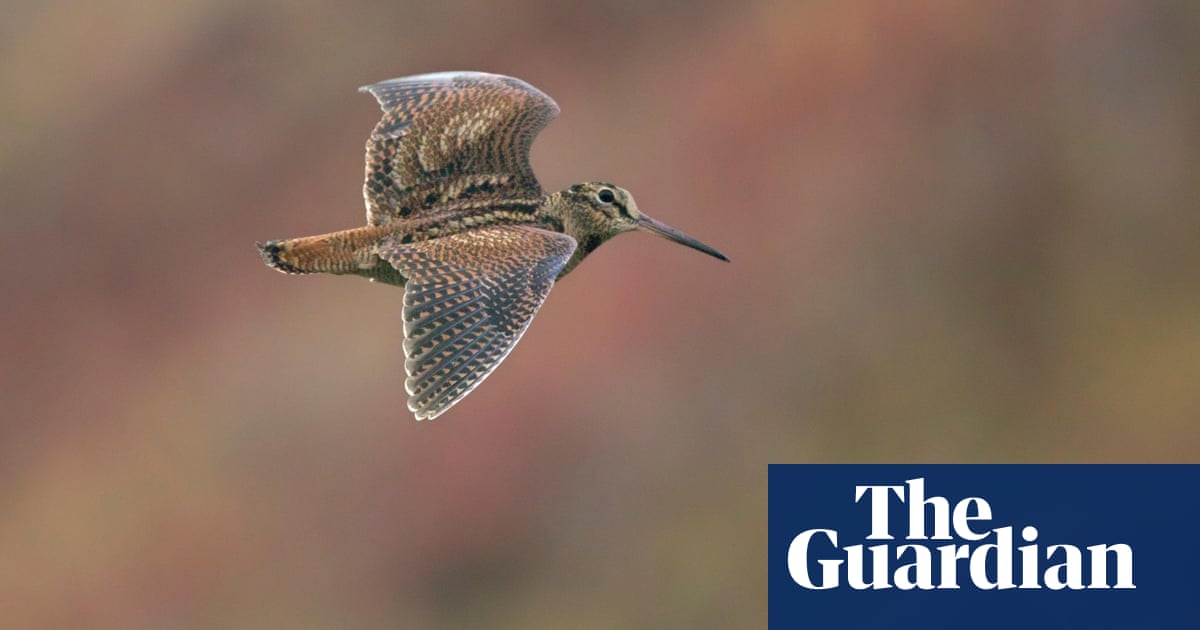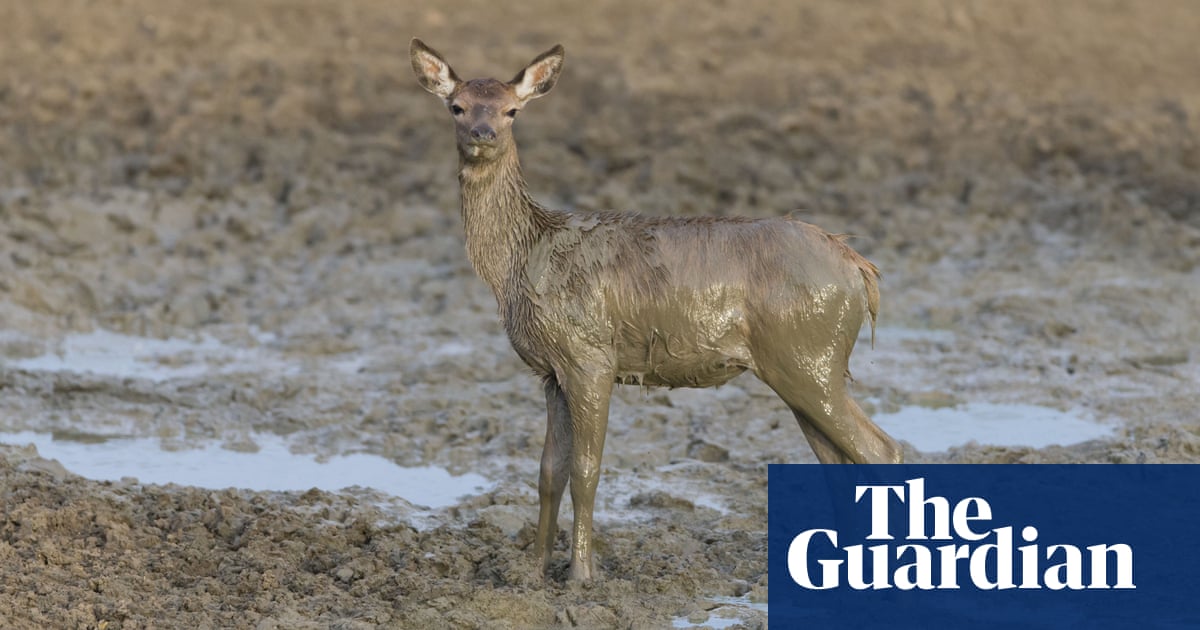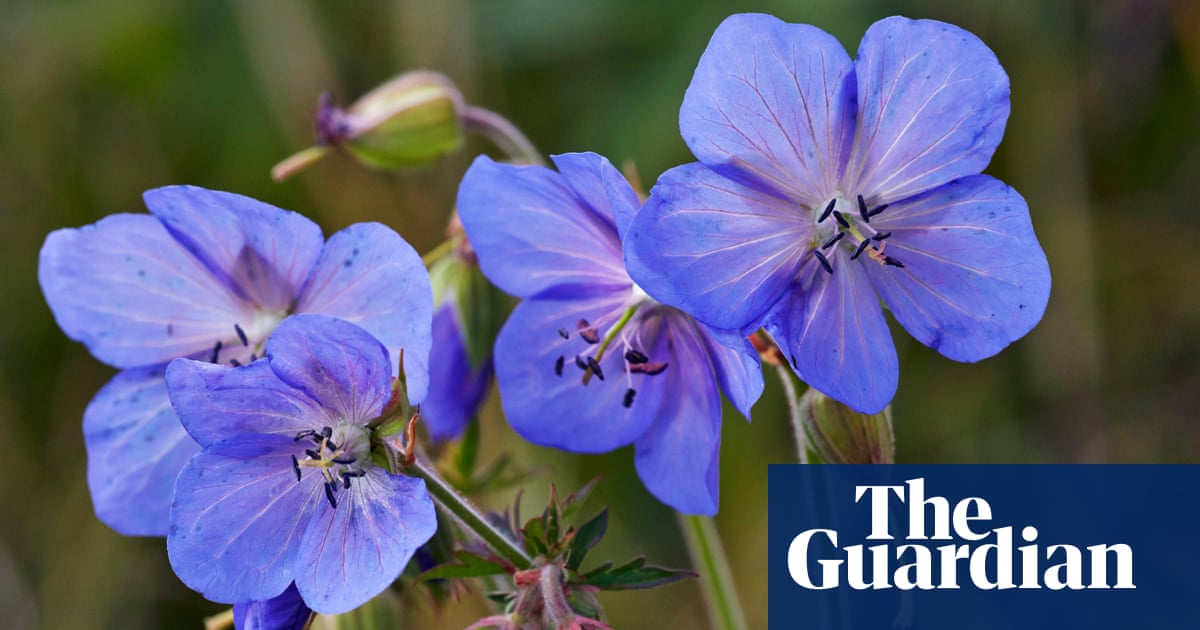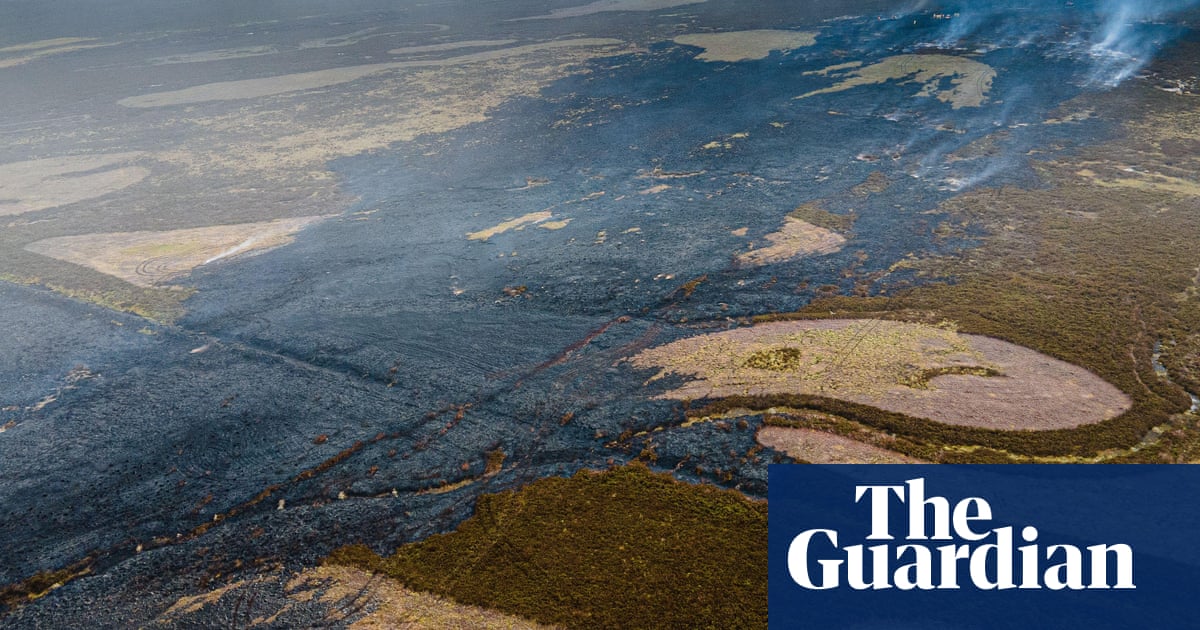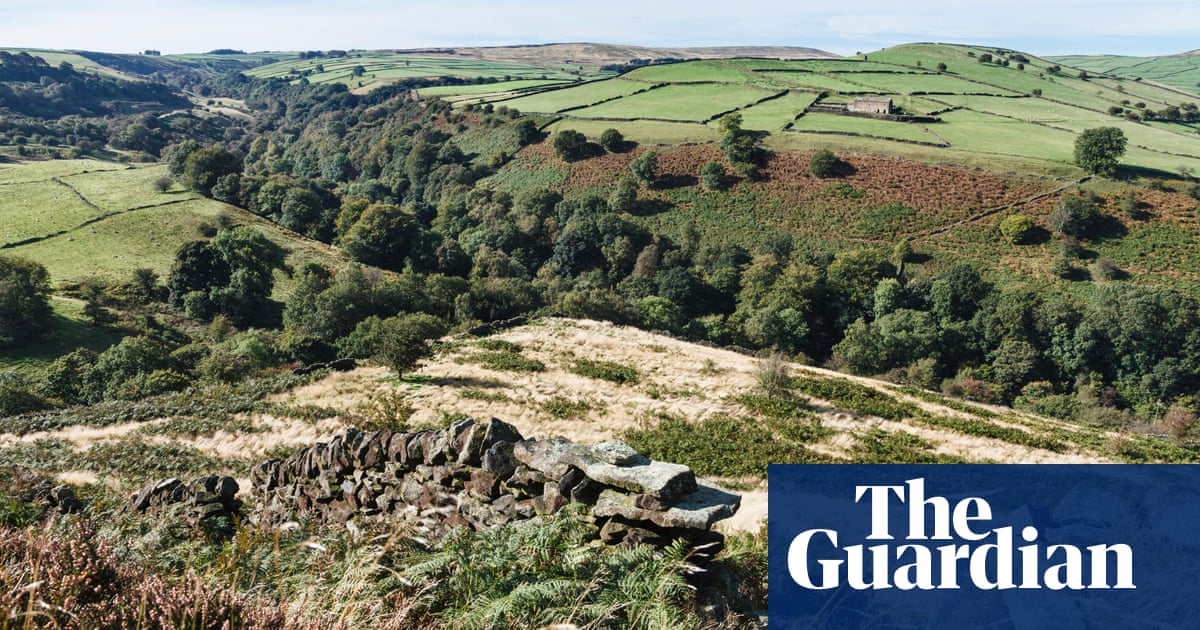
Bretton Clough Farms are ruins now, a heap of stones topped with shrubby trees. They occupy a rise above a stream that after recent rain was crashing through its steep-sided valley. It is raining as we arrive, slopping down the hill on an old cart track, but then a huge window of blue opens from the south-west and the slopes around us catch fire, with coppery bracken and yellowing oak leaves.
There were once two farmhouses here, semi-detached, built most likely in the 17th century. They’ve had various names through time, Bretton Twin Farms being self-explanatory. Another was Fairest Clough, sometimes Fairies Clough – just right for a place whose harmonious flow and tangled woodland has magic in it, especially on such a day of sunshine and showers as this.
The strip of pasture beside these ruins was known as “nine akkers”, or nine acres – in reality not much more than seven – a narrow system of rough fields tucked between the steep bank of the clough and where the hillside steepens again towards the wild moor above. Marginal doesn’t do it justice. I have a photograph of the farm buildings from just after the first world war, shortly before they were abandoned after generations of struggle. The pasture is still grazed today, but the surrounding slopes have since become shrouded with trees: oaks and sycamores, mountain ashes and birches that intensify the sense of a lost world.
I drop further down the hill to a fence where the slope steepens dramatically above the stream. I’d camped here in the early summer, lulled to sleep by its murmur. Now I hardly recognise the spot. In the months since, shrubby growth has barged in, and where I’d pitched my tent, groups of crimson waxcap have sprouted, sticky and blood red in the autumn sunshine, some splitting with age and fringed with yellow.
I conjured the waxcap’s mycorrhiza – the tendrils of its root system, longer than human memory – spreading towards the base of a nearby oak, whose sinuous branches reach out across the void above the water’s flow.




